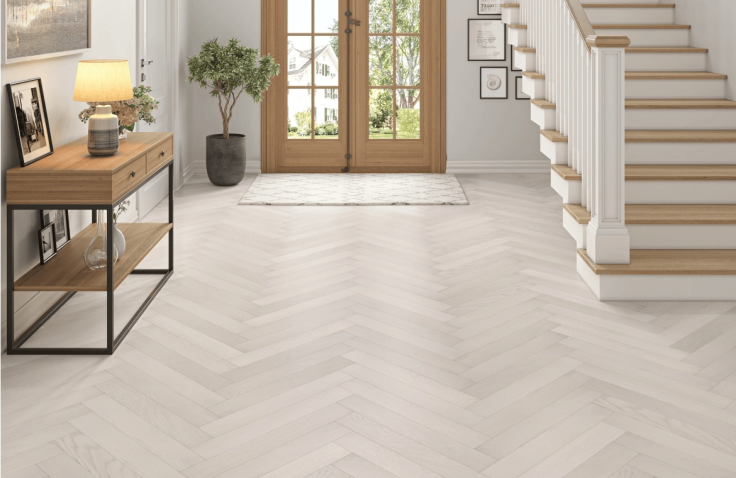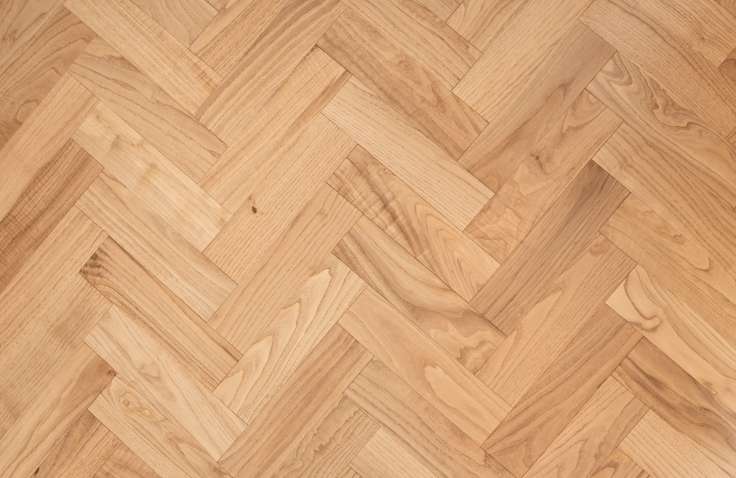Herringbone vs Chevron Parquet: Which Flooring Style Speaks to Your Space?
Discover how the classic charm of herringbone and the modern flair of chevron can transform your room

Choosing between herringbone and chevron parquet styles can significantly influence the look and feel of a space. Each style lends a distinct character to the room, making the decision important for many homeowners.
Herringbone is ideal for those seeking a classic, traditional look, while chevron is often preferred for a more modern aesthetic. Both styles have unique patterns and appeal, transforming any space into something special.
Herringbone parquet features planks in a broken zigzag pattern, while chevron creates a continuous zigzag with planks cut at an angle. This difference in design can impact the visual flow of the room. Those interested in a timeless and intricate design prefer parquet flooring with a herringbone pattern for its classic look.
The choice between these styles also depends on personal preference and the space's existing decor. For those looking to make a room appear larger, chevron patterns can create a sense of movement and continuity. Meanwhile, herringbone adds texture and detail that can complement a variety of interiors. Both options bring unique qualities, allowing individuals to craft a space that reflects their style.
Understanding Herringbone and Chevron Parquet
Herringbone and Chevron parquet styles offer unique designs that can change a room's look. These patterns have rich histories, distinct visual traits, and specific installation techniques.
Historical Background
Herringbone parquet flooring dates back to Ancient Rome, where it was first used in road systems. Over time, this pattern gained popularity in European homes, especially during the Renaissance era. It became a symbol of elegance and sophistication in the interiors of grand estates and palaces.
Chevron flooring has origins in France, particularly during the Baroque period. This style was favoured for its uniform and refined appearance. It became prominent in aristocratic settings, adding a touch of luxury and order to rooms. Both styles have maintained their appeal in modern designs due to their timeless elegance.
Visual Differences

Herringbone patterns create a staggered zigzag effect with rectangular planks laid at right angles, forming a broken zigzag design. This gives a room a dynamic and classic look, ideal for areas where a statement is desired without overwhelming the space.

Chevron, on the other hand, features planks shaped into parallelograms. The ends of the planks are cut at angles, typically 45 degrees, creating a seamless and continuous V-shaped pattern. Chevron's clean lines and symmetry give it a modern and sleek appearance, making it suitable for contemporary interiors.
Installation Techniques
Installing herringbone flooring involves laying identical rectangular planks in a staggered zigzag formation. Each plank is laid perpendicularly, creating a complex and eye-catching pattern that can be adjusted to fit different room sizes without cutting edges.
Chevron flooring forms a perfect V-shape by cutting each plank at an angle. This requires precise measuring and cutting before installation to achieve the continuous zigzag effect. Professional installers often prefer Chevron for its high-end look, but careful alignment and preparation are required to maintain its precise design.
These installation techniques depend heavily on precise measurements and expertise, underscoring the importance of skilled craftsmanship in achieving the desired results.
Factors to Consider When Choosing
Several factors can guide the decision when selecting between herringbone and chevron flooring. These include the size and shape of the room, desired look, upkeep needs, and flooring strength. Making the correct choice involves balancing practicality with style and considering long-term performance.
Room Size and Dimensions
The size and shape of a room significantly impact the choice between herringbone and chevron patterns. Herringbone patterns can make smaller spaces feel larger due to their unique visual flow, which creates a sense of movement that expands the room visually. On the other hand, chevron patterns often suit larger areas as they provide a structured look, making expansive spaces feel more organised.
Tall rooms with high ceilings can significantly benefit from herringbone flooring. The intersecting lines draw the eye upwards, improving vertical space. Meanwhile, chevron patterns can highlight the length of a room, emphasising a room's horizontal dimensions. Room size and shape should match the desired impact that each pattern provides, thus achieving the best visual effect.
Aesthetic Preferences
A personal sense of style plays a massive role in choosing between these flooring patterns. Herringbone flooring offers a more traditional and classic look. It is often seen in older homes and can lend a space an elegant and timeless feel. The broken zigzag pattern draws attention without overwhelming a room's design.
With its V-shaped pattern, Chevron flooring presents a more modern and sleek appearance. It gives a streamlined, continuous look that can complement contemporary aesthetics. Chevron can add a bold flair, especially in minimalist settings. Ultimately, the style selected should align with the overall theme and elements present in the room, establishing harmony.
Maintenance Requirements
Understanding maintenance needs is key when choosing flooring patterns. Due to their intricate designs, both herringbone and chevron require specific care. Regular sweeping and occasional mopping are necessary to keep the floors looking their best.
Herringbone can sometimes trap more dust in its tighter corners, leading to slightly increased cleaning efforts. Chevron's design, with its straight lines, is generally easier to clean since the flow of the pattern doesn't collect debris as easily. Knowing the cleaning routine that best fits a lifestyle can simplify decision-making.
Durability and Longevity
Durability is another consideration. Both herringbone and chevron floors use the same materials, meaning they offer similar resistance to wear and tear. Yet, the installation method affects durability. Carefully laid out herringbone and chevron patterns tend to last longer because each piece supports the next.
The choice of wood or material grade affects how well the floor stays over time. Hardwoods usually offer greater durability than softer options. Installation quality and material choice influence how long either pattern will last, helping guarantee that the investment is wise for the long term.
Conclusion
Choosing between herringbone and chevron parquet styles comes down to personal preference and the desired effect in a space. Both patterns have distinct visuals; the herringbone creates a more intricate, broken zigzag, while the chevron forms a continuous, clean V-shape.
Consider the design statement you want to make and how each pattern complements your room's aesthetics. Each style adds character and can transform a space's overall appearance. The decision ultimately relies on the mood and atmosphere you wish to create.
© Copyright IBTimes 2025. All rights reserved.





















